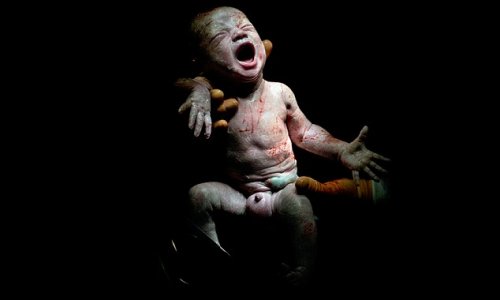The skeletons of a mother and her child buried side-by-side are among those which are to be excavated from an ancient burial ground after being disturbed during construction for London's Crossrail.
Archaeologists have started excavating 3,000 skeletons from Bedlam burial ground, which is at the site of the new Liverpool Street station that will serve the cross-London rail network.
Used from 1569 until at least 1738, including during the Great Plague in 1665, the burial site - also known as Bethlehem and the New Churchyard - was opened after graveyards around London started to overflow.
It was situated in close proximity to Bethlem Royal Hospital - the first dedicated psychiatric institution in Europe – and was used to bury London’s poor and religious non-conformists as well as inmates from the asylum.
The site, which was uncovered by Crossrail workers who are in the process of building a new ticket hall above the burial ground, is thought to contain the remains of a former lord mayor of London, a notorious criminal and political activists.
The skeletons will be excavated over the next four weeks by a team of 60 archaeologists who will work in shifts, six days a week.
They will carefully remove the remains and record evidence for what may prove to be, in archaeological terms, London's most valuable 16th and 17th Century cemetery site.
After the excavation, the workers will then dig through medieval marsh deposits and Roman remains including a road that runs under the site, which has already yielded several interesting Roman artefacts such as horseshoes and cremation urns.
The skeletons will then be reburied on consecrated ground.
Archaeologists are expected to finish on site in September, after which construction will proceed on a new eastern ticket hall by contractor Laing O'Rourke.
Jay Carver, Crossrail lead archaeologist, said: 'This excavation presents a unique opportunity to understand the lives and deaths of 16th and 17th century Londoners.
'The Bedlam burial ground spans a fascinating phase of London's history, including the transition from the Tudor-period city into cosmopolitan early-modern London.
'This is probably the first time a sample of this size from this time period has been available for archaeologists to study in London.
'Bedlam was used by a hugely diverse population from right across the social spectrum and from different areas of the city.'
(dailymail.co.uk)
ANN.Az



Follow us !











